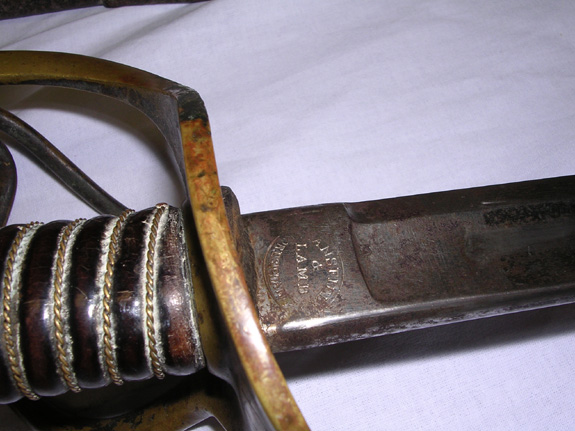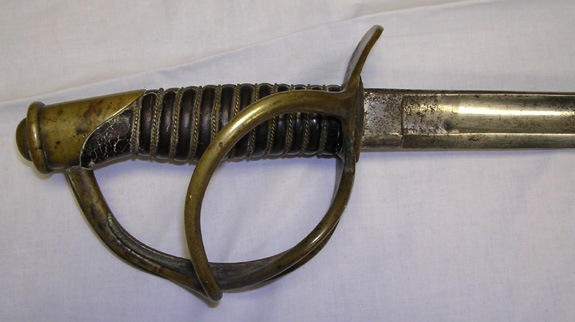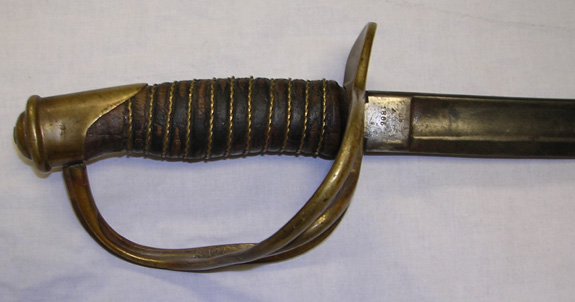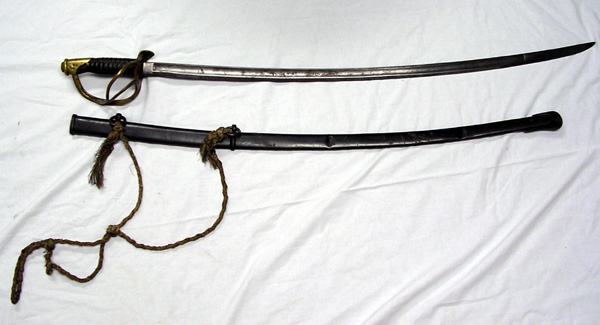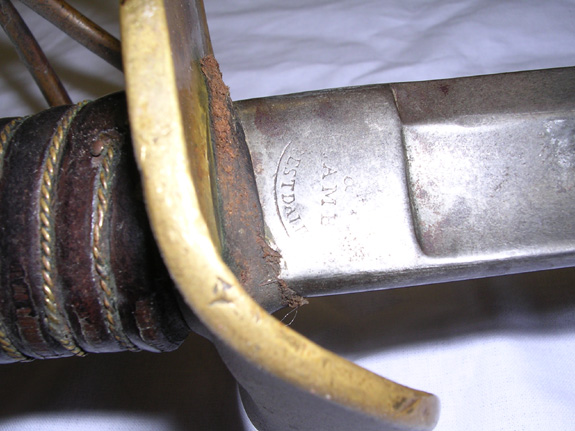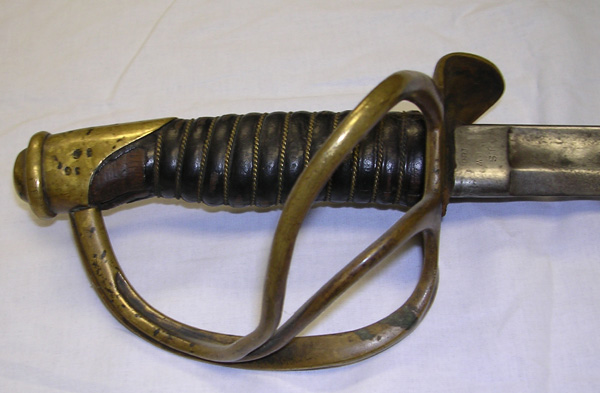Posts: 133 Location: Kansas City
Fri 05 Sep, 2003 7:47 pm
A Family treasure found
I guess these are my 3 newest editions to my collection.
I had seen a old photo of my father and uncle as small children, and noticed in the background some swords. I made a comment on them and was told they were the sabers used by my family during the War of Northern Aggression (also know as the American Civil War) :) Anyway long story short after many calls and much searching I finally found them after they have spent who knows how long in a trunk, in a shed, in south Missouri.
First I want to share them with you, but also I have no experience with antique swords all of mine are replicas. So what steps do I need to follow to preserve them and prevent any further deterioration and what are some good resources to identify them and maybe restore them.
I will post some detail shots later on.
 Attachment: 119.88 KB
Attachment: 119.88 KB
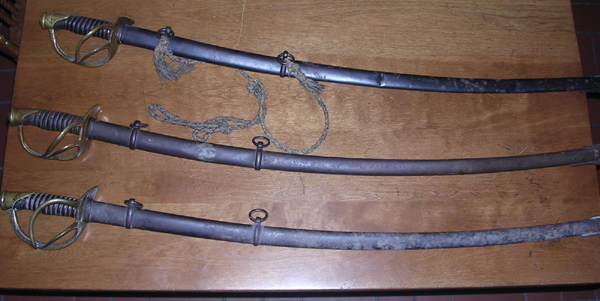
 Attachment: 87.1 KB
Attachment: 87.1 KB
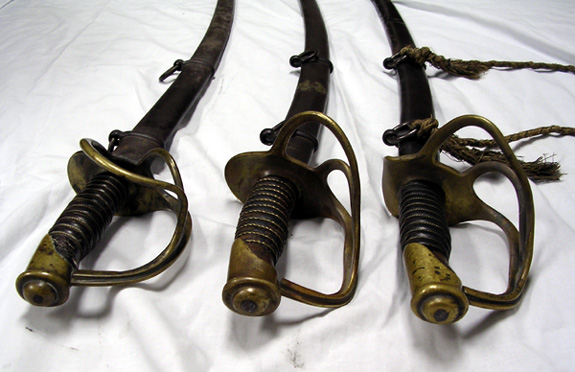
 Attachment: 93.53 KB
Attachment: 93.53 KB
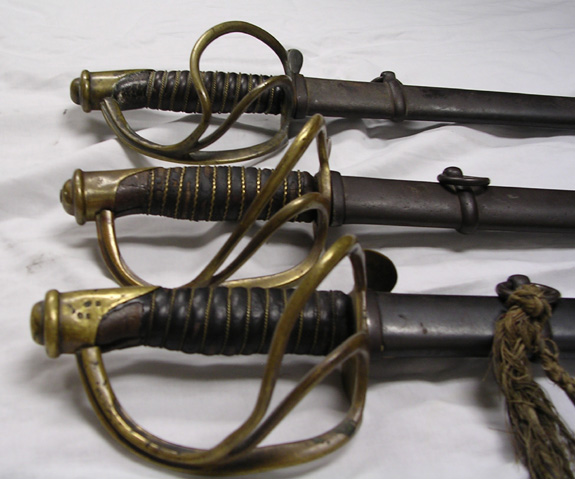
Posts: 133 Location: Kansas City
Fri 05 Sep, 2003 7:50 pm
Posts: 133 Location: Kansas City
Fri 05 Sep, 2003 8:01 pm
Posts: 133 Location: Kansas City
Fri 05 Sep, 2003 8:03 pm
Posts: 124
Fri 05 Sep, 2003 10:58 pm
Very Very nice... M1860 cavalry blades, or extremely similar patterns. The guards appear to be bent up a a smidge, but thats extremely common, and not that big of a deal. Did your family fight on the north or south side? I'll assume from your calling it the 'war of norther agression' that it was southern.. there tended to be more variance in equipment on the southern side. It also can be a bit more valuable. The chape of the scabbards, and the swell in the handles are the give-away of the m1860 pattern... on the m1840 that closest resembles it, the chape would have a larger swell, and the handle wouldnt bulge in the middle, on the edge side.
the plain hilts mark them as troopers rather than officers sabres (or at least not officers who cared to buy/could afford their own) they cannot be m1872 weapons as those switched to an iron guard, and the scabbard rings were positioned a little differently. same with the M1906 blades, though i believe those went back to a brass guard. given that evidence and your families verification, they're of the m1860 pattern unless they're some weird import. Mansfield and Lamb, as I understand it, produced significantly less blades than Ames did, and are tend to be valued more. the civil war contracts and production numbers, at least for the north, have been preserved to some extent, and are available on the web.
I have an m1860 blade that i bought as a bare blade and am in the process of turning into a shashqa. I have cut extensively with it, and it is truly sublime. its the best cutting sabre I've had the pleasure of handling.
Whether or not you ever do anything with them but admire them, be aware that you've got three very capable swords there.
Do they show evidence of sharpening at any point, or do they have a basically .5 to .75mm rounded over edge for most of the length of the blade?
Sigh. nice man.. really really nice.
Since you're in a picture taking mood, could you shoot a shot of the little secondary fuller just below the spine, in about the centre of the blade?
my blade has sadly had an encounter with a buffer or something, before I got it and it and its little secondary fuller is nothing more than a faint impression. still and all, its a nice flexible blade, handles well and cuts beautifully.. I've cut up to 2 inch bamboo, and bundles of 3 to 4 one inch pieces.. In fact, if you havent seen it, my little article/webpage link is down the list a bit... and somewhere in the thread includes a link of a short video from my kenjutsu dojo's tameshigiri day last year when I cut with the sabre.
again, great blades, absolutely wonderful. I wouldn't advise doing really any restoration work, frankly, they dont appear to need any. they're very clean compared to most i've seen. I'd just make sure there is no active rust, and get in the habit of regularly oiling them... collectors may not like restoration - there is no reason to not maintain the nice condition they're in. :-)
Wow, im impressed.
Thanks for sharing - and thank whoever in your family had the foresight to store them at least decently. I wish more people had done the same.
the information in this message is accurate to the best of my knowledge from the photos you've posted. if anyone else *knows* i've messed something up, jump in and say so, dont be bashful. I hate having bad info uncorrected, even more than I hate giving out bad info on accident. :D
Chris
Last edited by Chris Holzman on Fri 05 Sep, 2003 11:13 pm; edited 1 time in total
Posts: 124
Fri 05 Sep, 2003 11:04 pm
oh.. and hopefully not to bug you too much, but I'd love to have some weights, measurements, and points of balance as well..
oh.. and reference the hilts.. please don't try to cleanse the patina from them... you'll probably not be happy with the result - the resultant bright brass will *quickly* make you think of cheap replica/reenactor sabres.
the guys at ames sword company do make nice weapons still, by all accounts, and seemed very above board and decent when i've talked to them... they can doubtless put you in touch with people to really help you identify the weapons, and maybe suggest a course of action for preservation.
Posts: 723 Location: Sweden
Sat 06 Sep, 2003 12:19 am
Congrats on your find! As for care and maintenance, here's a good article:
http://hometown.aol.com/machood/swordcare.html
Posts: 133 Location: Kansas City
Sat 06 Sep, 2003 10:55 am
Posts: 601
Sat 06 Sep, 2003 11:43 am
Beautiful sabers! Congratulations!
If I were you, I would not touch anything! Just wipe the blade with Ballistol or any good oil and let it set and wipe it off after couple of hours and then apply oil again. The sword blades do not show any signs of active rust and are in good condition, so let these old soldiers rest.
Really nice sabers, really nice.
Regards
Manoucher
Posts: 5,739 Location: Wichita, Kansas
Sat 06 Sep, 2003 11:54 am
I agree with the general consensus, just leave them alone. A light application of oil should be all that's needed. These swords are actually in very good shape all things considered. I've seen many that were in far worse shape. Take care of these old family heirlooms. Military sabres of the American Civil War used to be a dime a dozen, but are getting increasingly rare and more valuable as time goes by.
You
cannot post new topics in this forum
You
cannot reply to topics in this forum
You
cannot edit your posts in this forum
You
cannot delete your posts in this forum
You
cannot vote in polls in this forum
You
cannot attach files in this forum
You
can download files in this forum



